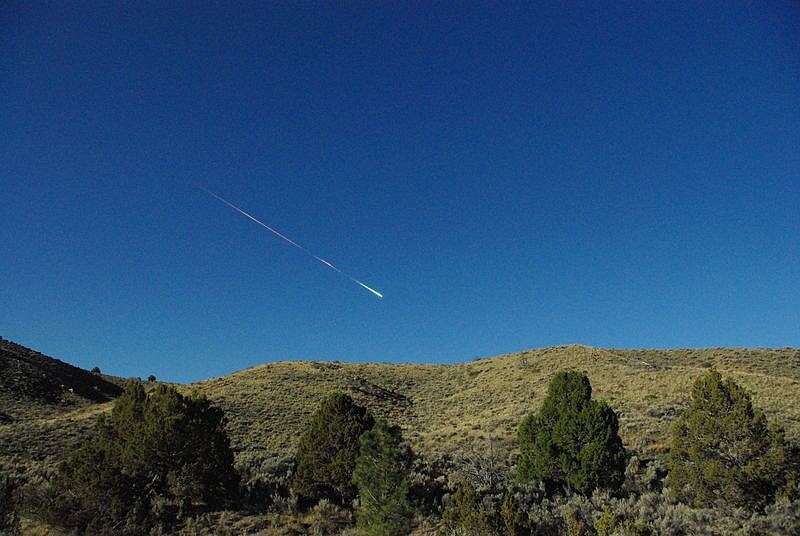RENO, Nev. (AP) - Tiny meteorites found in the Sierra foothills of Northern California likely were part of a giant fireball that exploded in daylight with about one-third the explosive force of the bomb dropped on Hiroshima at the end of World War II, scientists said Wednesday.
The tiny rocks weighed about 10 grams, or the weight of two nickels, said John T. Wasson, longtime professor and expert in meteorites at UCLA's Institute of Geophysics and Planetary Physics.
Experts say the flaming meteor was probably about the size of a minivan when it entered the Earth's atmosphere with a loud boom about 8 a.m. Sunday. It was seen from Sacramento, Calif., to Las Vegas and parts of northern Nevada.
An event of this size might happen once a year around the world, said Don Yeomans of NASA's Near-Earth Object Program Office at the Jet Propulsion Laboratory in Pasadena, Calif. "But most of them occur over the ocean or an uninhabited area, so getting to see one is something special," Yeomans added.
"Most meteors you see in the night's sky are the size of tiny stones or even grains of sand, and their trail lasts all of a second or two," he said.
The fireball was probably the size of a minivan weighing about 154,300 lbs, estimated Bill Cooke, a specialist in meteors at NASA's Marshall Space Flight Center in Huntsville, Ala.
At the time of disintegration, he said it probably released energy equivalent to a 5-kiloton explosion. The nuclear bomb dropped on Hiroshima was 15 kilotons.
Wasson told the AP that one meteorite was found near the town of Coloma, about 35 miles northeast of Sacramento and another was discovered to the west near Lotus between Auburn and Placerville.
He said they were located by collectors who were knowledgeable but did not identify them.
"I'm sure more will be found, I'm hoping including some fairly big pieces," said Wasson, who has been at UCLA since 1964 when he obtained his doctorate in nuclear chemistry at the Massachusetts Institute of Technology. "The fact that two pieces already have been found means one knows where to look."
Bits of the meteor could be strewn over an area as long as 10 miles, most likely stretching west from Coloma, where James W. Marshall first discovered gold in California, at Sutter's Mill in 1848.
Wasson suspected hundreds of dealers and collectors already have joined the search. He said it was important to recover the meteorites soon because any rain will cause them to degrade, losing their sodium and potassium.
"From my viewpoint as a meteorite researcher, I'm hopeful some big pieces are found right away," he said.

